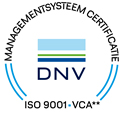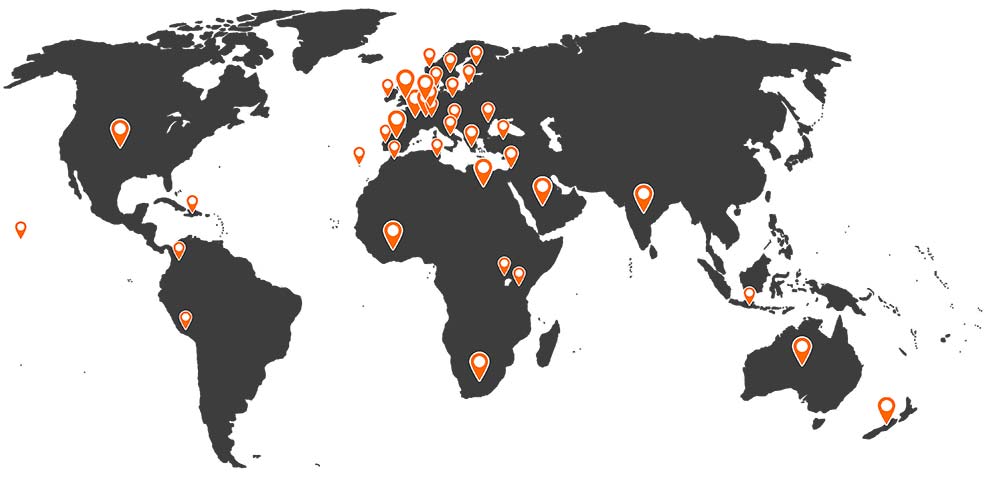Luiten Food: make smart use of the available space
Sandwiched between houses, a road and a soccer field, Luiten Food in Stompwijk has to handle every square meter efficiently.
Expansion of the business premises was necessary in 2016 and the family business opted for a sustainable new building with business premises, production space and office. Next year Luiten Food will replace the last old part of the building. Nijssen designed and realized the environmentally friendly and energy-efficient ammonia-CO2 cooling and freezing installation.
The existing 1,000 m2 of deep-freeze storage was expanded in 2016 with a business hall with 1,600 m2 of refrigerated / freezer rooms and 1200 m2 of processing space, with office space on the first floor. In 2019, another 2800 m2 of cold stores, shipping and processing space will be added. Meat for the consumer market is cut, portioned and packaged in the processing room.
Extra investment that pays for itself
"Luiten Food did not opt for a low-cost commercial solution for room conditioning," says John Diederik, senior technical engineer at Nijssen. “With this industrial installation, they have a robust solution for the longer term. That requires an extra investment, but with this size of the installation it will definitely pay for itself. At the same time, they are fully prepared for the future with this sustainable solution. "
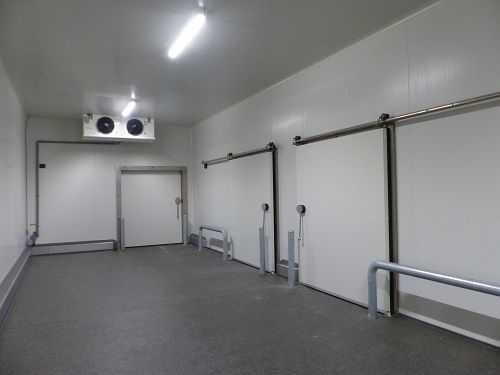
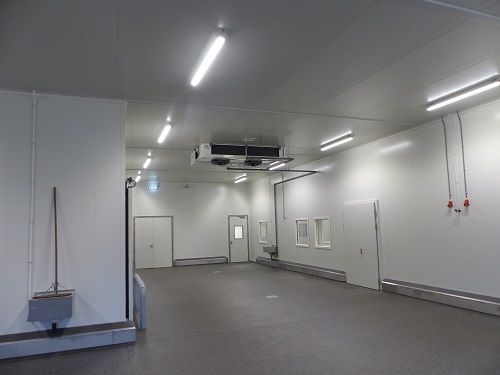
Cascade installation with natural refrigerants
Nijssen has developed an indirect cooling installation with ammonia as the primary refrigerant. Pumped circulation is used for the cooled rooms and the freezer section is based on direct expansion (DX) of the secondary refrigerant CO2. With a small amount of ammonia, the CO2 is cooled back via a cascade cooler to -/- 8 ° C. The cooled CO2 is buffered and pumped around and releases its cold through the coolers in the rooms. The buffer vessel also functions as a high-pressure storage vessel for the coolers in the freezer cells. Two piston compressors further cool the CO2 down to -/- 32 ° C.
Higher return
The choice for this design and these refrigerants has several advantages. In an indirect installation, only a small amount of ammonia is needed, which is only located in the engine room and the outside air-cooled condenser with which excess heat is removed. In the meantime, the installation achieves a higher efficiency than an installation based on synthetic refrigerants. The choice of CO2 gives a higher return than the use of glycol or a brine. With this design, the entire investment was also eligible for EIA contribution. This makes the total net investment approximately 15% lower.
Machine room over two floors
"Due to the tight location, the engine room is positioned on the first floor," explains John Diederik. "Pumps are placed one floor below, with a passage through the fire-resistant intermediate floor.This space on the ground floor can simply be used for the expedition. Because we design all installations to size, we can respond optimally to the circumstances for every customer. ”
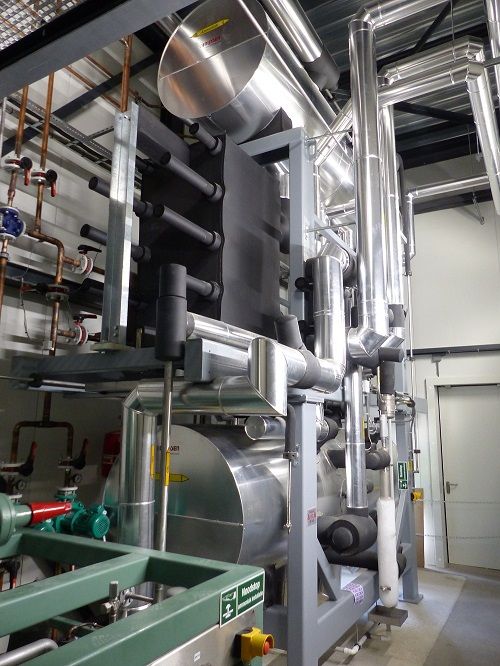
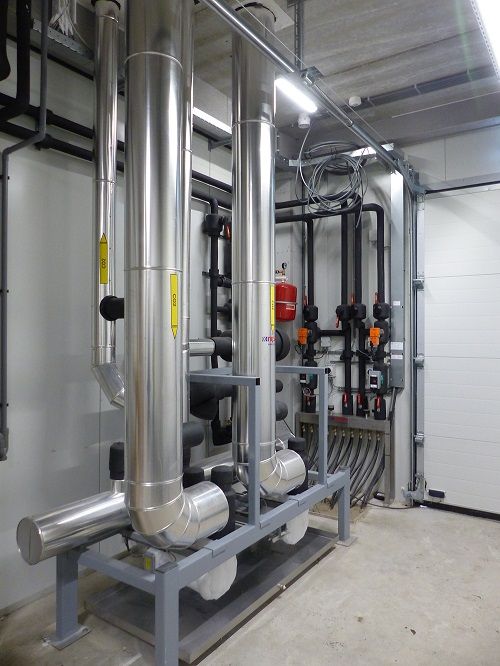
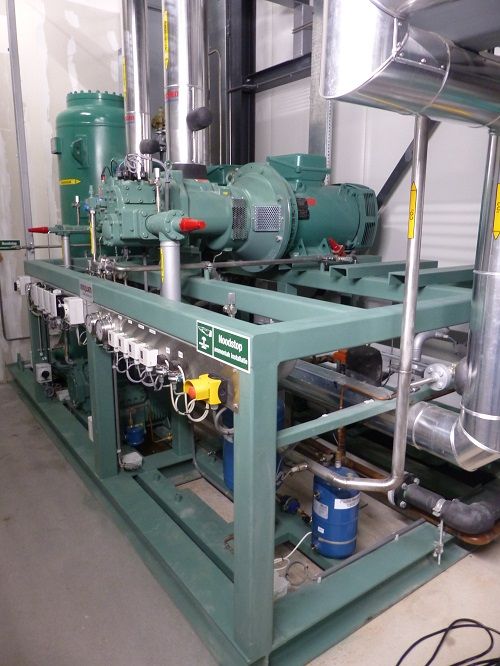
Dual functionality
One of the rooms has dual functionality as a fridge / freezer. The coolers in this room are connected to both the cooling and the freezing system. They can run both via the pump system and via the DX system. Because more air circulation is required for the cooling function, this space is also equipped with additional support fans.
Energy efficient components
In addition to opting for the energetically superior natural refrigerants, the installation is equipped with numerous energy-efficient components. All NH3 and CO2 compressors are equipped with a frequency inverter, so that they run as energy-efficiently as possible even in part load.
Heat recovery
A lot of heat is released during the cooling of the refrigerants, among other things during the condensation of the ammonia and during the cooling of compressed gases. A closed water / glycol system is indirectly heated via a heat recovery system. With this free heat, the coolers are defrosted in all areas. The recovered heat is also used for floor heating and defrosting of the freezer rooms, for heating all areas and for the hot water supply in the building.
Unused heat dissipated
The amount of heat that actually becomes available depends on the capacity of the compressors used. The heat demand for defrosting the coolers and space heating does not always match the available heat. The excess heat produced is dissipated via a dry cooler and an air-cooled condenser. This is equipped with a stepless energy-efficient speed control by using EC fans. For a corrosion-resistant version, the condensers are supplied with blades made of seawater-resistant aluminum.
Intelligent arrangement
The in-house developed regulation also provides additional energy savings and better control of air conditions. The system continuously measures the cooling requirement and other conditions, such as the outside temperature. The working conditions are constantly optimized based on this. The user-friendly visualization provides an intuitive control.
Second phase new construction in 2019
After completion of the new construction, various small freon installations were dismantled and all spaces in the existing building were connected to the new central installation. These coolers will be reused in the second phase of the new building in 2019. The compressor kit installed in 2016 is prepared for the expansion. An additional NH3 compressor and an additional CO2 compressor can easily be added. This means that sufficient capacity is available. An additional cascade cooler is connected to allow the CO2 to be pumped around in the new rooms. "In 2019 we will replace the last old part with new construction," says Patrick Luk van Luiten Food. "We assume that we can easily cope with further growth for a number of years."

Family business operating worldwide
Luiten Food is a family business with over three quarters of a century of experience in importing and distributing of game and poultry. "We focus on specialties," says Patrick Luk. “Luiten Food has its own import and export of fresh and frozen products from all over the world. We have since grown into a total supplier of beef, lamb, game, poultry, exotic game and Ibérico pork. The wide range finds its way to small and large buyers active in food service, food processing, wholesale, catering, retail and specialty stores within and outside Europe. "






